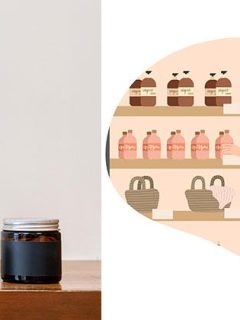A warehouse like this is a microcosm of its own. A place of transshipment for goods, a supposed chaos in which everything has its exact place. Whether it’s a warehouse for goods, a materials warehouse, a workshop warehouse, a temporary warehouse, a shipping warehouse, a raw materials warehouse, a sales warehouse or a finished goods warehouse, regardless of whether it’s a bakery, a mail-order business or a nursery – everything is stored on shelves.
Shelf – no matter?
Exactly not! It is clear that choosing the right shelving system or boltless shelving is essential for a smooth workflow. I can only work effectively if I make optimal use of the storage space and have the necessary tools at hand in as few steps as possible.
However, attention should not only be paid to the selection, but also to the proper operation and maintenance of a rack. Because:
Shelving is work equipment
According to §10 of the 2009 Ordinance on Industrial Safety and Health (“Inspection of Work Equipment”), commercially used shelving is work equipment and as such is subject to mandatory inspection. What does this mean? And to which racks does this apply?
The operator of the warehouse is responsible for the safety of his employees. Accordingly, he has to carry out an inspection of the storage racks once a year or have it carried out.
Why is racking inspection important?
Every day, storage equipment is subjected to high loads, which in the long run puts a strain on even the most powerful industrial shelving systems. A damaged racking system can lead to injuries to personnel or damage to goods. Preventive measures can reduce costs and avoid accidents. In the event of damage, you are also covered by insurance.
Who is allowed to inspect?
The annual inspection must be carried out by certified inspectors. These can either be commissioned from external providers or carried out by a “competent person”. So you can also have an employee trained as an association-certified racking inspector. The necessary knowledge is imparted by the Association for Storage Technology and Equipment (LBE) in training courses lasting several days and must be proven by passing a final examination. Regular follow-up training is obligatory. Training courses are offered, for example, by DEKRA or the Chamber of Industry and Commerce.
What does the examiner check?
Insulation packaging helps to delay the temperature rise as long as possible. They reflect the cold inside the package (metallic surfaces are ideal here) and insulate against heat influences from outside.
- Visual inspection for damage or deformations according to the criteria specified in DIN EN 15635.
- Check for unacceptable, overloaded or incorrectly used load supports
- Comparison of the load plates with the assembled racking system
- Preparation of an inspection report and award of the inspection sticker
Manufacturers must provide all the necessary information for the prescribed risk assessment. This is the only way to assess hazards that are not immediately recognisable without the corresponding information.
Shelf load & field load
The bay load describes the maximum load on a shelf or shelf level when the shelf is uniformly loaded.
The bay load is the maximum load per shelf bay (i.e. per basic shelf or per add-on shelf), the dead weight of the shelf is not included.
Basic & Add-on bay
A basic shelving unit is always required for an assembly, which can be supplemented with add-on shelving units as required. If there are several add-on shelves, the basic shelf should be in the centre.
Labelling
If the shelf load is > 200 kg and/or the bay load is > 1000 kg of your shelf bay, the attachment of a load label is required by law.
Shelf marking
Each shelf must be marked with a so-called load label: This shows with how much maximum weight the individual shelf and the shelf bay may be loaded.
These labels are supplied by the manufacturer or can be requested there if necessary.
After the annual inspection, round inspection stickers (similar to the TÜV stickers on cars) are affixed, which provide information about the date of the last inspection.
In order to make the quality verifiable for the customer, many (of the shelves manufactured in Germany) bear the RAL-RG 614 quality mark, which is awarded by the Association for Storage and Operating Equipment (LBE). Manufacturers who carry the quality mark are continuously monitored during production by a neutral institute, for example by the Materialprüfungsamt Nordrhein-Westfalen (MPA-NRW), from Dortmund. The monitoring takes place twice a year, during which, among other things, assembly and operating instructions as well as factory and welded products are checked and material samples are taken and tested. Racks that comply with the FEM standard 10.2.02 are also tested by the FEM (French: Fédération Européennede la Manutention; English: European Federation of Materials Handling and Storage Equipment) according to such strict rules.
Why is it audited annually?
It’s obvious: there is a lot of movement in a warehouse. Damage can occur during loading and unloading, whether due to disregard of the maximum shelf load or carelessness when driving with pallet trucks and the like. Possible defects are safety risks that absolutely must be uncovered and remedied by the inspection.
- The racks must be provided with load labels (available from the manufacturer, the necessary information such as max. shelf load etc. must also be provided).
- The racks must be used in accordance with the manufacturer's instructions (no overloading or highly uneven loads).
- The shelves must be visually inspected on a regular basis (weekly or monthly, depending on the load). An annual one must take place, most easily by an external provider.

















